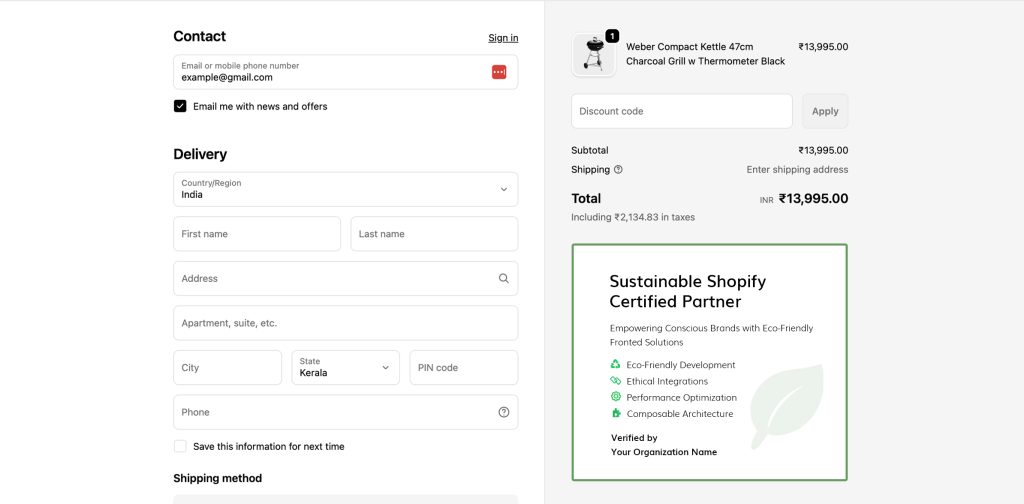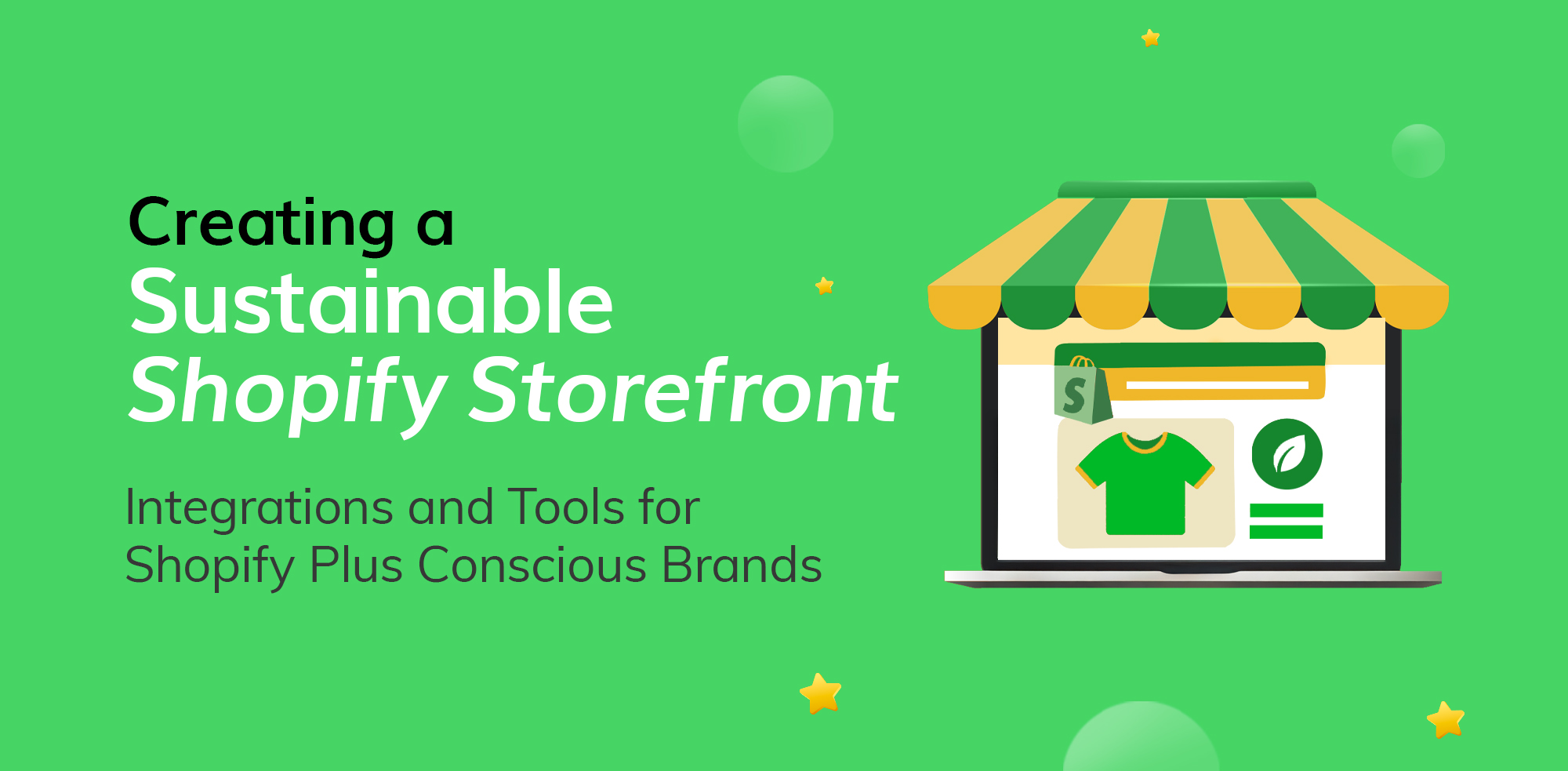Sustainability is not a nice act to do nowadays for the conscious consumer economy; it’s a requirement for establishing a brand. Consumers need transparency, equitable sourcing, and lower carbon emissions. For Shopify Plus merchants, this provides an effective method of aligning commerce with conscience through intelligent technology, integrations, and automation.
If you’re an eco-friendly brand or planning to become one, here’s how to build a sustainable Shopify Plus store that balances making a profit with having a purpose.
1. Start With a Sustainability-First Store Design
Before diving into tools and integrations, it’s important to focus on sustainability in the user experience and design.
- Optimise for efficiency and speed. Lightweight themes, optimized images, and reduced external scripting reduce energy per visit and increase load speed.
- Feature sustainability storytelling. Utilise expert columns or landing pages to highlight your company’s footprint, from material procurement to supply chain transparency.
- Incentivise environmentally friendly shopping. Include “compare impact” or “eco-benefit” reminders to enable customers to envision the good they generate with each purchase.
Shopify Plus tip: Enjoy even greater design freedom with metafields and custom checkout, ideal for highlighting impact badges or environmental metrics as part of the purchase process.

2. Environmental Impact and Carbon Offset Integration Tools
A green store is less about messaging and more about doing something about it. Shopify Plus has integrations that enable this with ease:
- Shopify Planet App (by Shopify): Automatically carbon offsets shipping emissions and provides customers with assurance of your sustainability commitment.
- EcoCart: Encourages consumers to directly invest in carbon offset projects at checkout, making every purchase an act of impact.
- Cloverly: Integrates API-based carbon offsets into your shipping operations, product production, or marketing campaigns.
These solutions not only lower your footprint but also foster customer loyalty by exposing actual outcomes.
3. Partner with Sustainable Fulfillment and Shipping Businesses
Shopify Plus store owners can partner with sustainable shipping and fulfillment businesses to minimise environmental footprint:
- Sendle or ShipBob Green: Offer carbon-neutral shipping with route-optimized delivery.
- Locad or Easyship: Assist in tracking distributed stock, reducing long-distance shipping and emissions.
- Fair Trade or B Corp integrations: Dynamically show badges and certifications using product metafields.
Greenify green actions through Shopify Flow. For instance, automatically route orders to the closest fulfillment center to reduce emissions.
4. Use Smart Packaging and Product Transparency Apps
Packaging waste is eCommerce’s biggest sustainability issue. These apps reduce it:
- noissue: Offers sustainable packaging that integrates with Shopify Plus workflows.
- Zakeke or Threekit: Make products user-configurable, which avoids overproduction and returns.
- RePack Integration: Offers returnable shipping containers for repeat customers.
You can also utilize Yotpo or Okendo to accentuate customer testimonials and reviews based on your green initiatives, with social proof as an ethical selling point.
5. Automate Reporting and Communicating Sustainability
Transparency is what makes trust. Shopify Plus allows brands to automate reporting and communicate openly about their achievements:
- Connect Shopify Flow and Google Sheets. This makes it easy to track eco-metrics such as offset donations or orders shipped in environmental packaging automatically.
- Utilise Klaviyo or Shopify Email. This enables automation of sustainability impact reports or year-end reports to your subscribers.
- Use Recharge and Impact Apps. With subscription eco-products, emphasise the environmental impact for each renewal period.
6. Measure, Optimise, and Share Your Impact
A sustainable Shopify storefront is not fixed; it is dynamic.
- Leverage analytics and reporting tools to observe the impact on customer behavior and revenues that sustainability has.
- Triple Whale or Liftimely: Monitor lifetime value for green customers.
- Shopify Audiences (Plus-exclusive): Target and identify “green shoppers” better.
- Impact Pages: Build dashboards to highlight your live sustainability metrics using apps such as Impactify or Liquid custom blocks.
Customers like transparency. Businesses that make their environmental performance statistics open will most likely have better retention and repeat buys.
7. Future-Proof Your Brand with Sustainable Commerce Strategy
Sustainability is a continuous process, not a project. Shopify Plus provides scalability and flexibility to continue to innovate as you scale. It may mean opening up take-back programs, developing a certified resale marketplace, or using blockchain-based supply chain transparency.
By incorporating sustainability into the DNA of your store, you build not just a business, but a movement, and customers will be eager to join it.
Key Takeaway
Building a sustainable Shopify Plus store is not just about carbon credits; it’s about flipping your whole eCommerce path on its head as a commitment to the planet. And with the right integrations and tools, you can put your brand’s purpose into metrics, enabling you to grow sustainably along the way.
True sustainability means creating an eCommerce experience that gives back as much as it grows. With Shopify Plus and the right digital strategy, you can make that shift real.
At Sweans, we help brands bring purpose to performance through thoughtful design and technology.
Ready to take the next step? Contact us.
I’m a Shopify and Full-stack developer with 3 years of experience building high-performing eCommerce sites and custom web apps. I specialize in backend architecture, subscription logic, and dynamic pricing—delivering scalable solutions tailored to business needs.

